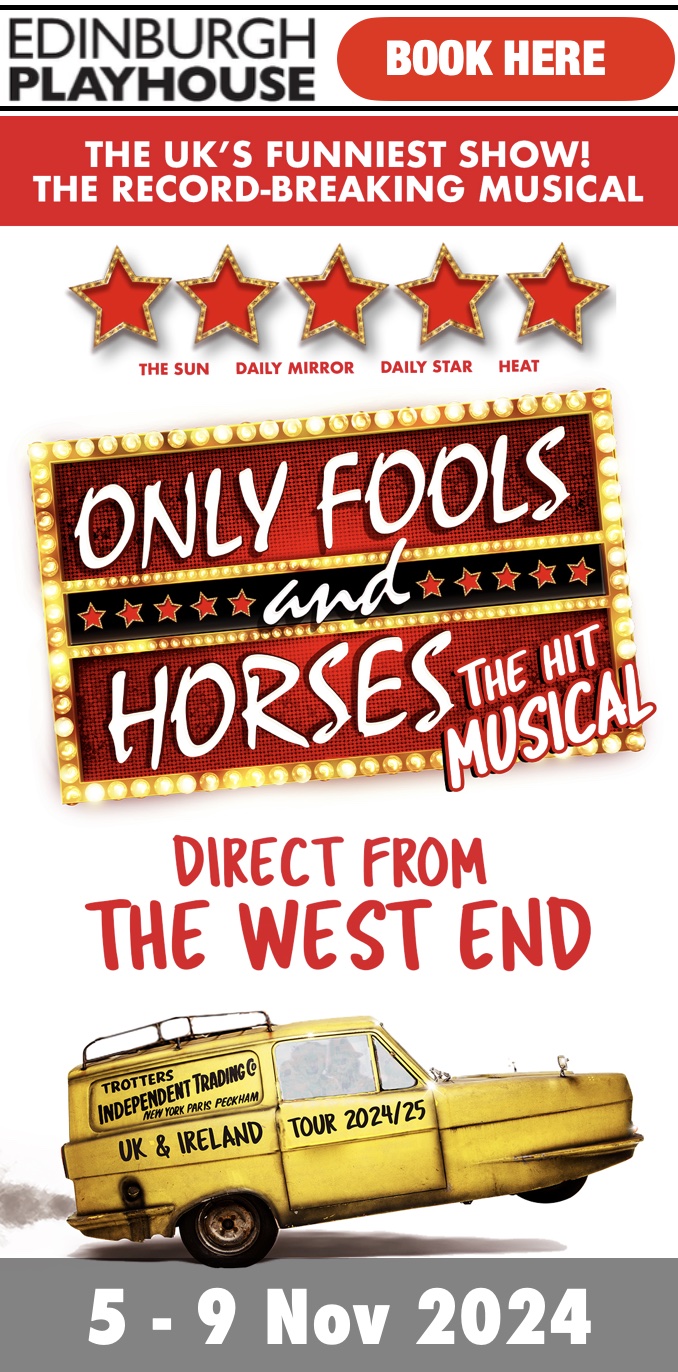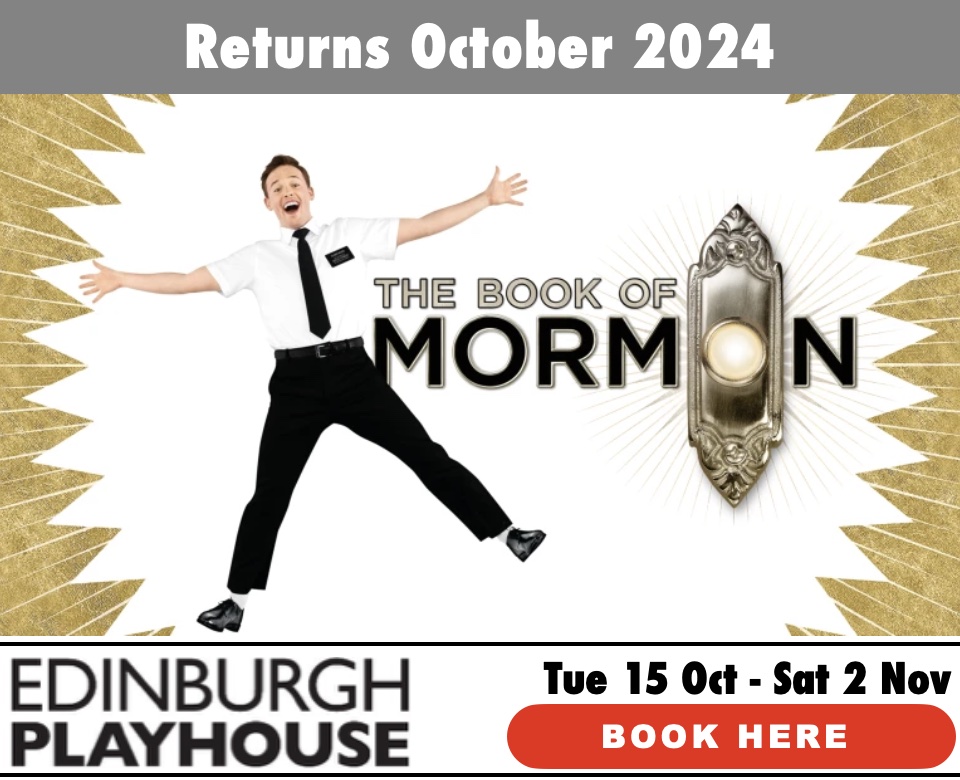Quantum’s Magic Seven
Kevin Quantum on how magic and straight theatre are linked
Edinburgh-based magician Kevin Quantum is a dab hand at melding elements of theatre into his act. Check out the presentation of his brilliant Flaming Balls act to Britain’s Got Talent if you don’t believe so.
Kevin Quantum has staged shows at the Fringe since 2006, some drawing on illusion, others delving into the history of magic and many using some sort of scientific element to bring his magic to life. In recent years he has become a sure-fire sell-out performer, with a strong following of people who come back time and again to witness his new illusions.
Quantum’s background as a scientist makes his scientific edge a natural progression. The interface between magic and theatre, however, is something which has grown in his performances over the years since he founded founded the Edinburgh Magic Festival in 2010 and one which is a fascinating place to explore.
So, ahead of this year’s sparkly EdFringe show Anti Gravity, which plays the Guilded Balloon Patter Hoose on Chambers Street all Fringe, and the return of his intimate Edinburgh Magic show to the Caledonian Hotel for a limited run, we asked Quantium for a little listicle of interesting areas where conjuring or magic is used in theatre or performance.
Kevin Quantum’s Magic Seven
Problem Solving: Experienced stage magicians have to be incredibly versatile. Certain tricks involve many aspects of theatre coming together to create moments of magic. It’s not unusual for prop design, lighting, set design, choreography (sleight of hand), acting, audience participation and control, and more to simultaneously meet head-on to create just a second of magic.
It’s a hell of a lot for a magician to hold in their head during a show but they must have a high understanding of these areas to construct the illusion in the planning phase, or it just won’t work at the point of delivery. It’s often this knowledge of theatre that is required when magicians are employed as a magic consultant in theatre shows.
Audience Participation: Magicians are masters of audience participation and interaction, a skill not often employed in mainstream theatre. Whenever an audience member is invited to be part of the show – you suddenly have a near incalculable performance risk.
Experienced magicians can masterfully use interpersonal skills to manage say a very nervous six year old to a tipsy 40-something to ensure the show doesn’t collapse. When theatre makers venture into audience participation, it can be very clunky and magicians are often consulted on how to involve audience members effectively.
Set Design: Centuries of illusion design have allowed magicians to be masters of deception by design. Clever use of fabrics, colour, shades, material type, contrast and shape have allowed magicians to … well let’s just say (I have to be careful or I’ll be thrown out the Magic Circle for revealing the secrets) create the “Dr Who TARDIS” effect amongst many others. Set designers will turn to magic books to enhance their understanding of illusion, and work into their designs.
Shows for Children: Kids’ magicians have mastered holding the attention of under eights for time immemorial. Over the years, children’s theatre makers have sat up and noticed. Having attended shows at Imaginate for nearly 20 years, I have seen more and more that employ the techniques magicians use, in children’s theatres performances. In the best children’s theatre these techniques have often been enhanced and magicians would do well to watch quality children’s theatre for inspiration.
The Mystery Box: JJ Abrams’ Mystery Box storytelling technique was inspired by his understanding of magic. He employed it in everything from his breakthrough series LOST and even his retellings of the Star Trek stories.
At heart it’s simple, show people a box and they will wonder what’s in it – you can then ask profoundly intriguing questions, some with no answer. The approach has divided opinion but been immensely successful.
Practice and Rehearsal: Nowhere are the differences in these two terms more clearly demonstrated than in the work of a magician. Practice is required to learn the workings of the magic prop or the sleight of hand trick or the pacing of a mindreading script.
It’s only when you understand the full nuances of what makes a “trick” magic – and can deliver them – that you can start rehearsing and building the show. Miss the practice part out and the magic falls flat, miss the rehearsing and you get a very dull presentation of skill. Both are essential. A good lesson in theatre too.
Prop Building: If there’s an area where magicians excel it’s prop building. There’s a multi-million dollar market for magicians who design, build and eventually sell all sorts of weird and wonderful magic props. Anecdotally it’s probably the world’s biggest market for performance props. It perfectly aligns with the geeky problem solving aspect of magic.
The sheer innovation is demonstrated by the thousands of card tricks on the market. But it’s not just the depth, it’s the fact that using all your inventiveness and creativity to make a prop that creates a moment of mystery is a lovely thing to do. Some props work by themselves (press a button and magic happens) others require practice and rehearsal to look like magic. Many theatre makers would benefit by dipping their toe into the online world of magic retail…
Listings
Kevin Quantum: Anti-Gravity
Gilded Balloon Patter Hoose, Doonstairs, 3 Chambers Street EH1 1HT
Venue 24.
Wed 31 July – Mon 26 Aug (not Tue 20)
Daily: 2.30pm (1 hour)
Tickets and details: Book here.
Edinburgh Magic
The Caledonian Edinburgh, Princes Street, EH1 2AB.
Venue 26.
Tue 8 – Sun 18 Aug.
Daily: 6pm & 8.30pm (1hour 10 mins)
Tickets and details: Book here.
ENDS






















